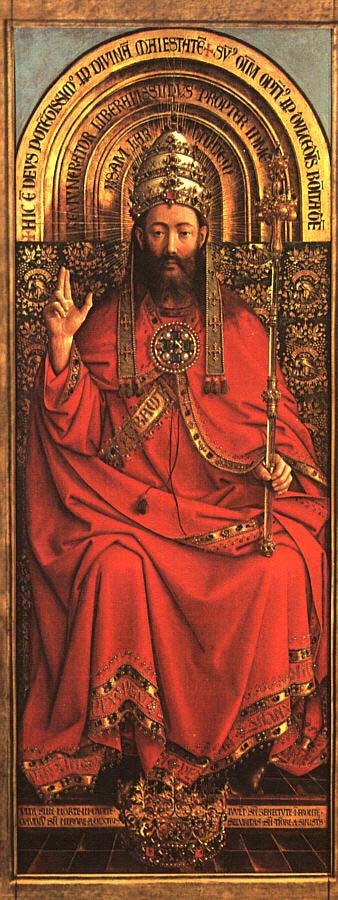Free E-Mail
Bible Studies
Beginning the Journey (for new Christians). en Español
Old Testament
Abraham
Jacob
Moses
Joshua
Gideon
David, Life of
Elijah
Psalms
Solomon
Songs of Ascent (Ps 120-135)
Isaiah
Advent/Messianic Scriptures
Daniel
Rebuild & Renew: Post-Exilic Books
Gospels
Christmas Incarnation
(Mt, Lk)
Sermon on the Mount
(Mt 5-7)
Mark
Luke's
Gospel
John's Gospel
7 Last Words of Christ
Parables
Jesus and the Kingdom
Resurrection
Apostle Peter
Acts
The Early Church
(Acts 1-12)
Apostle Paul
(Acts 12-28)
Paul's Epistles
Christ Powered Life (Rom 5-8)
1 Corinthians
2 Corinthians
Galatians
Ephesians
Vision for Church
(Eph)
Philippians
Colossians,
Philemon
1
& 2 Thessalonians
1 & 2 Timothy,
Titus
General Epistles
Hebrews
James
1 Peter
2 Peter, Jude
1, 2, and 3 John
Revelation
Revelation
Conquering Lamb of Revelation
Topical
Glorious Kingdom, The
Grace
Great Prayers
Holy Spirit, Disciple's Guide
Humility
Lamb of God
Listening for God's Voice
Lord's Supper
Names of God
Names of Jesus
Christian Art
About Us
Podcasts
Contact Us
Dr. Wilson's Books
Donations
Watercolors
Sitemap
Who Is the Central Image in the Ghent Altarpiece?
 Hubert (c. 1366-1426). and Jan van Eyck (c. 1390-1441; Flemish painters), Ghent Altarpiece (1432), central panel, God Almighty enthroned. Cathedral of St. Bavo, Ghent. |
The Ghent altarpiece (1432) by Hubert and Jan van Eyck, contains a striking image, wearing a papal crown and garments, seated upon a throne, with a crown at his feet. The Latin inscriptions arching over him read:
"Here is God, most powerful because of his divine majesty and high over all because of his sweet goodness and most generous in giving because of his measureless bounty."
Other inscriptions read:"King of kings and lord of lords."
"Youth without old age on his brow, joy without fear at his side."
The inscription on his sash says "Sabaut" (here used as a title, as in "Lord Sabbaoth his name"). (Latin translations provided by Dr. David S. Wilson-Okamura)The attribution of the central figure here has been controversial. The papal crown usually indicates the Father, but the youthful face is typical of the Son. Moreover, the central figure is in a triptych of the altarpiece between the Virgin Mary on the left and St. John the Baptist on the right pointing to him -- both figures closely related to Jesus in iconography. Normally when God the Father is depicted, along with him are symbols of other members of the Trinity.
For an in-depth discussion of the pros and cons of this, see Erwin Panofsky, "The Friedsam Annunciation and the Problems of the Ghent Altarpiece," Art Bulletin, 17, No. 4 (1935), 419-442.
After a long discussion, Panofsky concludes: "To summarize: from the point of view of representational traditions, we may safely continue to refer to the central figure in the 'upper triptych' as God the Father.... From the dogmatic point of view this figure belongs in the same class as its forerunners, its parallels, and its Flemish derivatives: it fuses the three Persons, God the Father, God the Son, and God the Holy Ghost into one image which is dogmatically equivalent to the whole Trinity."
Copyright © 2025, Ralph F. Wilson. <pastor![]() joyfulheart.com> All rights reserved. A single copy of this article is free. Do not put this on a website. See legal, copyright, and reprint information.
joyfulheart.com> All rights reserved. A single copy of this article is free. Do not put this on a website. See legal, copyright, and reprint information.
 |

|
In-depth Bible study books
You can purchase one of Dr. Wilson's complete Bible studies in PDF, Kindle, or paperback format -- currently 48 books in the JesusWalk Bible Study Series.
Old Testament
- Abraham, Faith of
- Jacob, Life of
- Moses the Reluctant Leader
- Joshua
- Gideon
- David, Life of
- Elijah
- Psalms
- Solomon
- Songs of Ascent (Psalms 120-134)
- Isaiah
- 28 Advent Scriptures (Messianic)
- Daniel
- Rebuild & Renew: Post-Exilic Books
Gospels
- Christmas Incarnation (Mt, Lk)
- Sermon on the Mount (Mt 5-7)
- Luke's Gospel
- John's Gospel
- Seven Last Words of Christ
- Parables
- Jesus and the Kingdom of God
- Resurrection and Easter Faith
- Apostle Peter
Acts
Pauline Epistles
- Romans 5-8 (Christ-Powered Life)
- 1 Corinthians
- 2 Corinthians
- Galatians
- Ephesians
- Philippians
- Colossians, Philemon
- 1 & 2 Thessalonians
- 1 &2 Timothy, Titus
General Epistles
Revelation
Topical

 To be notified about future articles, stories, and Bible studies, why don't you subscribe to our free newsletter, The Joyful Heart, by placing your e-mail address in the box below. We respect your
To be notified about future articles, stories, and Bible studies, why don't you subscribe to our free newsletter, The Joyful Heart, by placing your e-mail address in the box below. We respect your